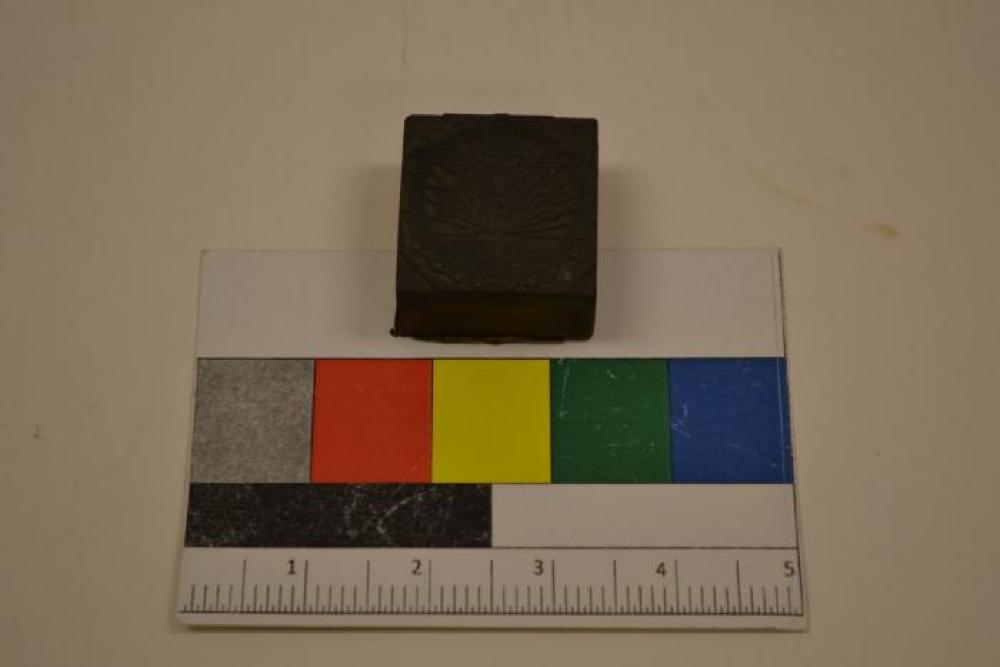Object ID
2008.37.8
Object Name
Block, Printing
Object Collection
Greek Art Printing Company Artifact Collection (is part of)
Material
Lead; Wood
Object Entities
Damianos, John (is related to)
Access Points
Object Description
Wood and cast lead printing block. The block is square-shaped. The cast image is the seal of the Sons of Pericles. The seal image has a circular olive branch along the outside of the seal. At the top of the circle is an image of Pericles with helm resting on his head. Below the image of Pericles is and eagle with outstretched wings perching on a cross with equal-lenghted arms. Behind the image of the cross are two crossed swords with blades pointing downward. To the right of the eagle and cross is the Upsilon symbol. To the left of the eagle and cross is the symbol for Pi. Flanking the downward arm of the cross on each side is "JUNIOR," on the right, and "ORDER OF," on the left. Lines radiate in all directions from behind the cross. Beneath the cross is the double outline of a rectangle curved to match the curvature of the olive branches. Inside the rectangle is: "AHEPA."
Origin
Donated by John Damianos. The printing block was used in a linotype printing machine. Linotype presses allowed for the casting of entire lines to be printed at a time. Linotype printing was eventually succeded by lythograph printing and computer typesetting during the 1960's and 1970's. This printing block was used by the Chicago-based, The Greek Art Printing Company. The Sons of Pericles is the Junior Order of AHEPA. Sons of Pericles was organized in 1926 to promote Hellenism to youth and to maintain Greek culture. AHEPA was formed in 1922 as an answer to widespread racism during that period. AHEPA seeks to promote Hellenism, education, philanthropy, civic responsibility, and individual & family excellence. Pericles was a Athenian statesman, orator, and general during the Golden Age of Athens. He is most recognized for his literary and artistic works. The eagle is commonly associated with strength and courage. The cross with equal-lenghted arms is associated with Greek Orthodoxy and early Christianity. Crossed swords with the blades pointing downward symbolize and end to fighting, i.e. peace. Olive brances are most commonly used as symbols of peace, but also have associations with Greek mythology and Christianity.
Rights and Reproduction
The content on this site is made available for research and education purposes only. The use of these materials may be restricted by law or the donor.
Any other use, such as exhibition, publication, or commercial use, is not allowed except by written permission in accordance with the NHM Image Rights and Reproduction Policy.
For questions on image rights and reproduction, please contact nhmcollections@hellenicmuseum.org
Any other use, such as exhibition, publication, or commercial use, is not allowed except by written permission in accordance with the NHM Image Rights and Reproduction Policy.
For questions on image rights and reproduction, please contact nhmcollections@hellenicmuseum.org
Citation
Block, Printing, Greek Art Printing Company Artifact Collection, National Hellenic Museum, https://hellenic.whirlihost.com/Detail/objects/9781. Accessed 04/19/24.
